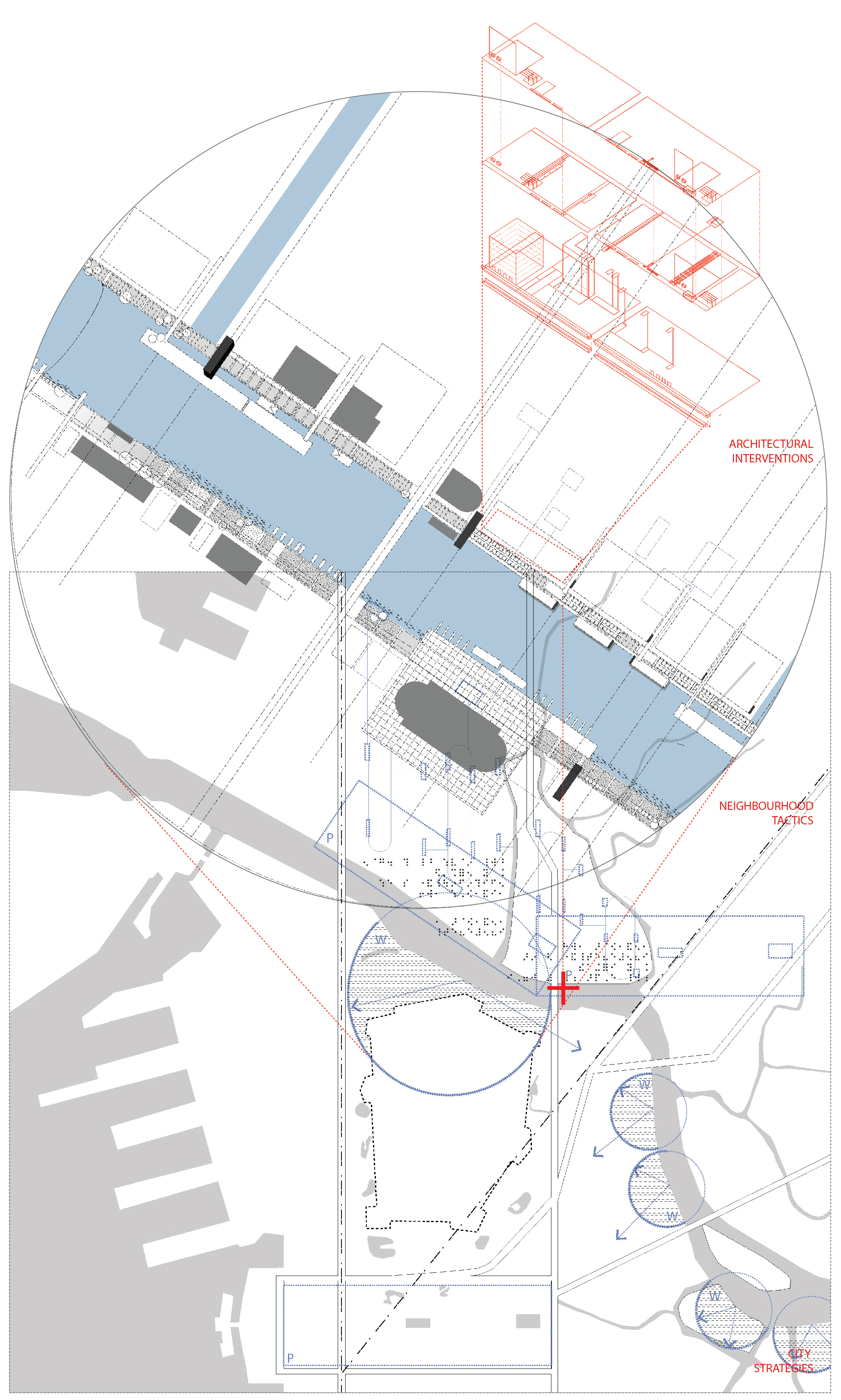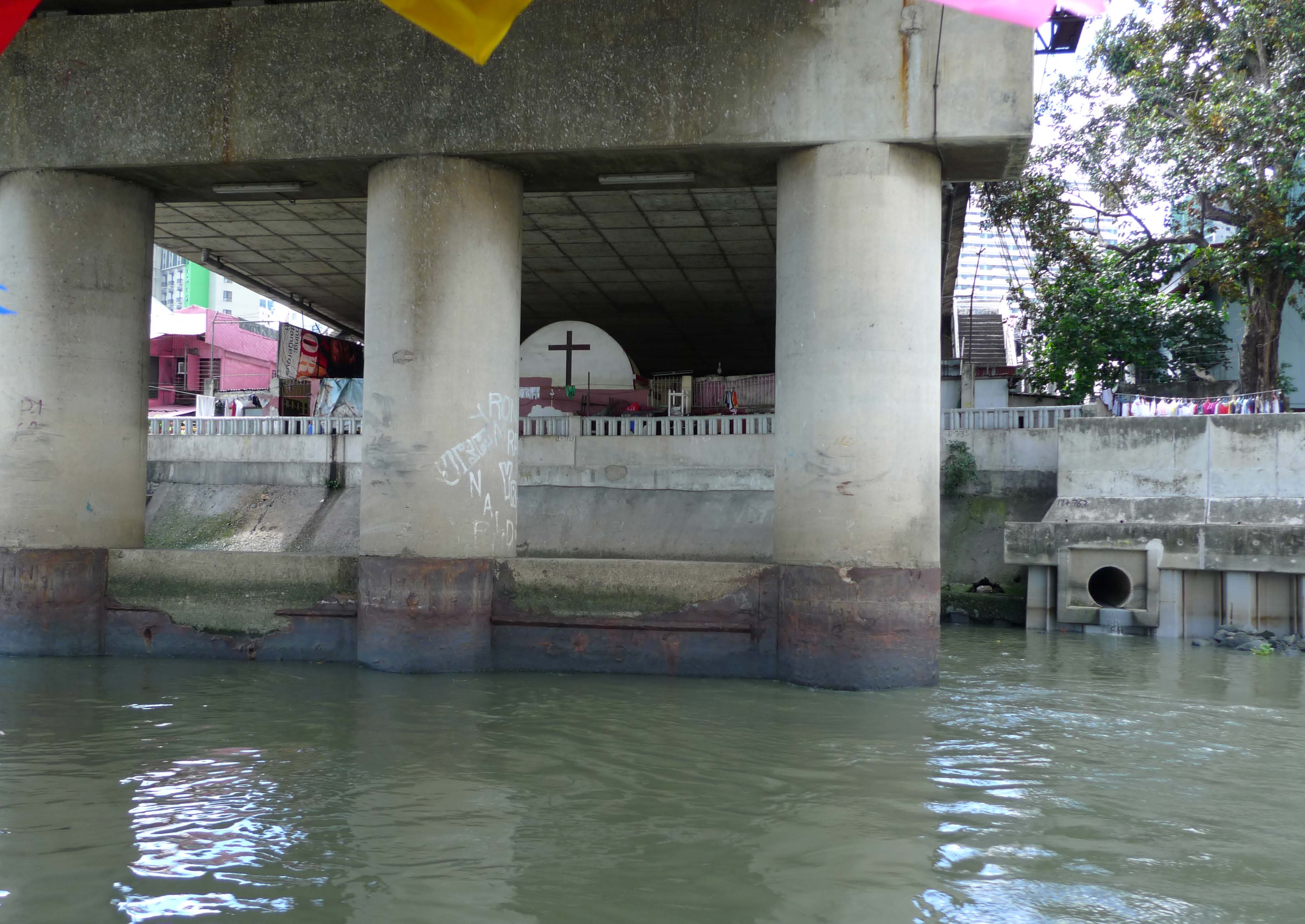Floodscape Urbanism
PhD Thesis, RCA 2018
‘Floodscape Urbanism’ develops design-led flood adaptation strategies for the city of Manila. With much ground already covered on cross-disciplinary approaches in flood risk management, this thesis considers the discussion of flood adaptation through the lens of ecological urbanism and architectural design.
The issue is the fluid edge between city and water and is captured in the term ‘floodscape’, to give definition to a cityscape affected by fluctuating water levels. This research project argues for the importance of urban design as the key driver to integrate the environmental and social concerns of the city in a holistic and critical way. Floodscape Urbanism therefore can be understood as a potential bridge between urbanism and hydrological cycles, with design providing a crucial framework within which to think about and act on environmental, technical, economic and socio-cultural challenges. Manila, as an extreme case of a flood-prone city, presents the challenge of having to balance vital flood management with creating places suitable for urban life that many cities in the global south are facing or will face.

“Sea-level rise is one of the central facts of out time, as real as gravity.
It will reshape our world in ways most of us can only dimly imagine.”
The Water Will Come, Jeff Goodell
Flooding in Manila
Over the next two decades, the number of people affected by river flooding worldwide could increase from 21 to 54 million. The expansion of cities in flood-prone areas, combined with the adverse impacts of climate change, such as heavier rainfall and rising sea levels, leave future populations and economies exposed to potential disaster. With these risks in mind, such cities urgently need to set new environmental, economic and social priorities within ‘climate conscious’ urban planning and management.At issue is the fluid edge between city and water, captured in the term ‘floodscape’, a cityscape affected by fluctuating water levels. The thesis argues the importance of urbanism as the key driver to integrate the environmental and social concerns of the city in a holistic and critical way. Floodscape Urbanism therefore can be understood as a potential bridge between urbanism and hydrological cycles, with design providing a crucial framework to think about and act on environmental, technical, economic and socio-cultural challenges.


Floodscape Urbanism as a Conceptual Framework
The need to reengineer and redesign cities for a changing climate and increased urban populations requires new conceptual models and practical methods for design. The architect’s engagement in flood management projects is crucial in deciding how new infrastructures can be introduced into existing urban fabric, and what formal and social impact these may have on the city.
Three case studies of urban flood management practice informed the study: Dhaka, New Orleans and Hamburg - cities that vary greatly in terms of their approach and capacity to deal with flood risk. The choice of cities was based on two criteria: a city’s ability to invest in flood adaptation, and its preparedness to manage institutional change. The cities’ awareness and implementation of environmental and urban strategies also informed the analysis.
Protection
New Orleans
![]()
![]()
New Orleans


Adaptation
Dhaka
![]()
![]()
Dhaka


Strategy
Hamburg
![]()
![]()
Hamburg


Floodscape Urbanism as a Practical Framework
The need to reengineer and redesign cities for a changing climate and increased urban populations requires new conceptual models and practical methods for design. The architect’s engagement in flood management projects is crucial in deciding how new infrastructures can be introduced into existing urban fabric, and what formal and social impact these may have on the city.Water Adaptation Catalogue:

Ecological Strategies:


Architectural Tactics:

Design Transfer - Metro Manila
In their cartographic representation, the edges of the Pasig River are drawn as well-defined lines that meander through Manila’s irregular urban fabric. Only more recently developed flood maps of the city provide a more accurate representation of these water edges as gradients that shift between wet and dry. The urban ground along the banks of the Pasig is defined by this dynamic field, which requires alternative ways for design to conceptualise, represent and act on the river’s natural flows and overflows.
Site A
Formal City
![]()
![]()
![]()
![]()
![]()
Formal City





Site B
Informal City
![]()
![]()
![]()
![]()
![]()
Informal City





Site Images:








Site A:







Site B:








